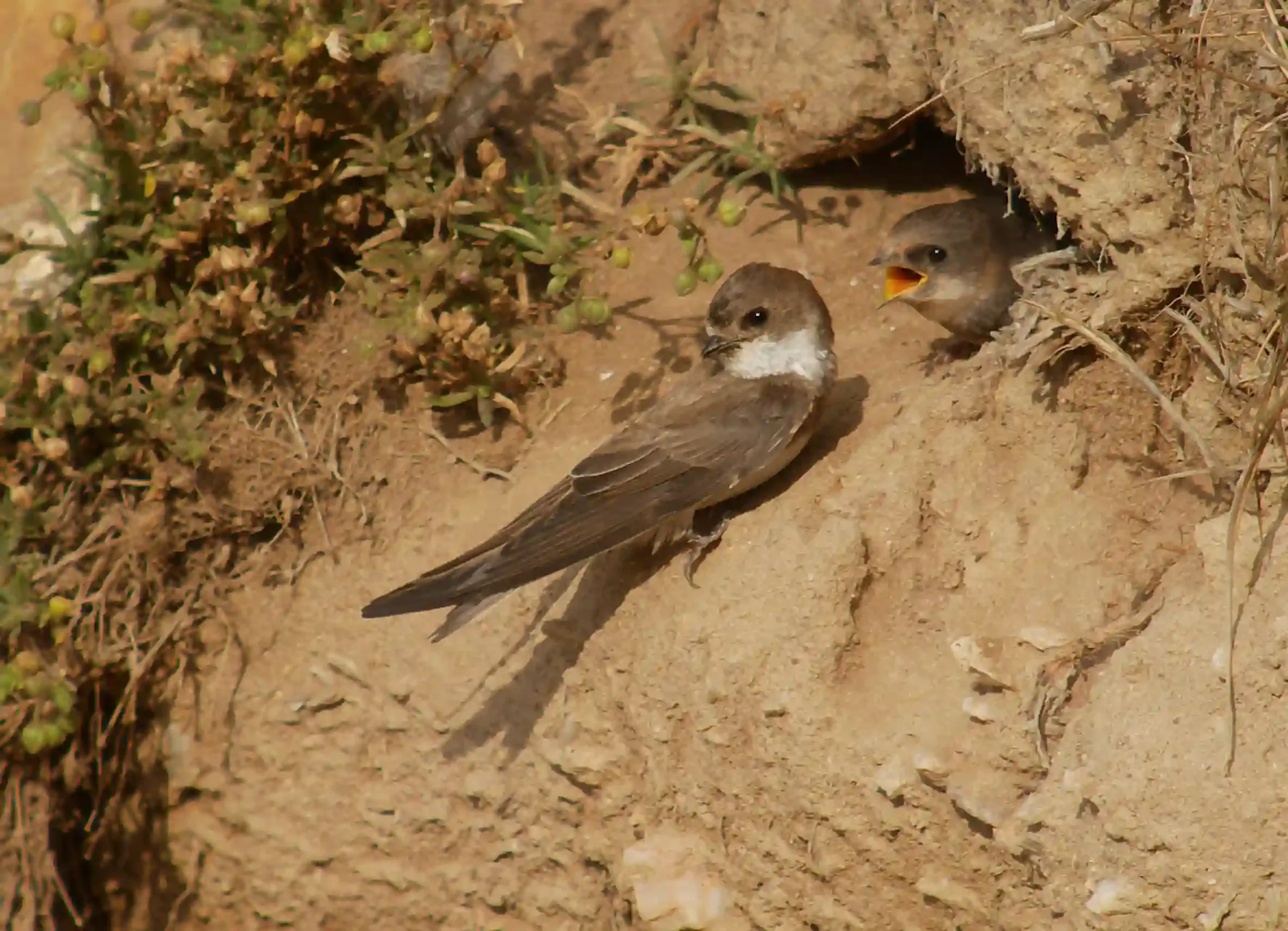Sand Martins (Bank Swallows) Nesting & Breeding Behavior
 |
| Mother Sand Martins feeding chicks |
Sand Martins, scientifically known as Riparia riparia, are small migratory birds belonging to the swallow family. They are also commonly referred to as European Sand Martins or Bank Swallows. These agile and acrobatic birds are recognized for their distinctive appearance, nesting habits, and migratory behavior.
Physical Characteristics:
Sand Martins are relatively small birds with distinctive features that help them adapt to their aerial lifestyle. Sand Martins have a compact and streamlined body with a wingspan of around 25-29 centimeters (10-11 inches). They have brownish upperparts, white underparts, and a brown band across the breast. Their wings are pointed, and they have a slightly forked tail. These features aid them in agile flight, allowing them to catch insects while airborne.
Habitat and Distribution:
Sand Martins are found across a vast geographical range, including Europe, Asia, and parts of North America. They prefer habitats near water bodies such as rivers, lakes, and reservoirs, as their diet primarily consists of flying insects caught over water.
Here's an overview of these fascinating birds and their nesting behavior:
Nesting Habits:
Sand Martins are known for their unique nesting behavior, where they create burrows in sandy or loose soil banks, hence the name "Sand Martin." These burrows serve as their nests and provide protection for their eggs and chicks.
Nesting colonies can vary in size from a few pairs to several hundred pairs, depending on the availability of suitable nesting sites. Sand Martins exhibit strong site fidelity, often returning to the same nesting colony year after year.
Nesting Sites:
Sand Martins prefer nesting sites in close proximity to water bodies, such as rivers, lakes, or quarries. The availability of sandy or loose soil is essential for them to dig their burrows. They often choose sites with easily excavatable surfaces, as they rely on their feet and beaks to dig their nesting tunnels.
Nest Construction:
The nesting process begins with a pair of Sand Martins
selecting a suitable bank or cliff face. They then begin the laborious process
of excavating a tunnel using their beaks and feet. The tunnel can extend
anywhere from a few inches to over a meter in length.
The tunnels typically lead to a nesting chamber where the eggs are laid and the chicks are raised. The entrance to the burrow is usually small and circular, designed to protect the nest from predators and harsh weather conditions.
Egg-laying and Incubation:
Inside the nesting chamber, the female Sand Martin lays a clutch of eggs. The number of eggs in a clutch typically ranges from four to six. Both the male and female take turns incubating the eggs, which usually lasts for about two weeks. During this time, they share the responsibilities of incubation and foraging for food.
Chick Rearing:
Once the eggs hatch, both parents continue to work together to care for the chicks. They feed their young with regurgitated insects that they catch in flight. The chicks grow rapidly, and their development is quite swift.
Fledging:
After about three to four weeks, the chicks are fully developed and ready to fledge. They leave the nest and begin to explore the world outside. The fledglings join the adults in their aerial pursuits, honing their flying and hunting skills.
Migration:
Sand Martins are highly migratory birds. After the breeding season, Sand Martins embark on their long migratory journey to their wintering grounds in sub-Saharan Africa. The migration is a remarkable feat for such small birds, covering thousands of kilometers.
Conclusion
Sand Martins are fascinating birds with
unique nesting habits that involve digging burrows into sandy or loose soil
banks. These burrows serve as protective shelters for their eggs and chicks,
allowing them to thrive in their preferred habitats near water bodies. The construction
of these burrows, coupled with their migratory behavior, showcases the
remarkable adaptations that these birds have developed to survive and reproduce
in a diverse range of environments.
Watch the Sand Martin nesting video





